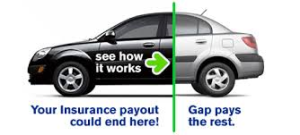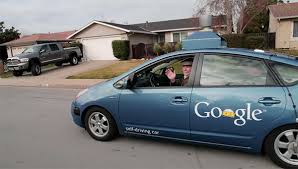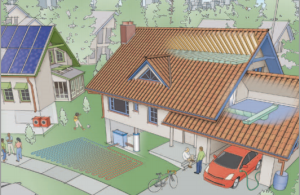The first question an insurance agent thinks about during a discussion about self-driving cars is, “Who is at fault in an accident? Is the car at fault? Is the computer at fault? Is the owner of the car at fault? Is the manufacturer at fault?” As this technology is evolves, the answer will probably lie somewhere the middle. California being the epicenter of the self-driving car experimentation, is beginning to offer special driver licenses to operators of self-driving cars. The training included basics like turning the system on and off and learning the circumstances in which it could be used. The rest was about handling emergencies, such as making lane changes to avoid crashing. Continue reading at Insurance Information Institute.
Local Stuff
Auto accident – It’s all about you
Filing an auto insurance claim is never fun. But with our help and these simple steps from the Insurance Information Institute, you can save yourself a lot of time and trouble.
This is Literacy Week
The mere presence of good books in a home has been shown by researchers to increase the reading ability of children in the home. Today, members of Rotary Club went to early childhood centers around the community to read the book “Time to Sleep” to four year old children. More than 1,000 books were purchased by Rotary and given to the children to take home. John became a Rotary Reader today and enjoyed reading to a very energetic classroom. Celebrate Literacy Week!

10 Best Post-workout Foods
Chocolate milk, yes! We are excited to learn that chocolate milk qualifies as a post-workout-recovery-drink. A study from Indiana University found that cyclists who refueled with chocolate milk were able to work out out for 50 percent longer the next time they got back on their bikes compared to those who swigged a carb-replacement drink. Bonus: The chocolate helps relax your arteries, increasing bloodflow to your muscles. Just watch out for brands with added sugar. See Yahoo Health for the other 9.

Quick tips to save energy
Now that it is January and cold on most days, it is a good time to think about ways to reduce energy usage in your home and save some money. Here are a few tips.
• Install a programmable thermostat to lower utility bills and manage your heating and cooling systems efficiently.
• Air dry dishes instead of using your dishwasher’s drying cycle.
• Turn things off when you are not in the room such as lights, TVs, entertainment systems, and your computer and monitor.
• Plug home electronics, such as TVs and DVD players, into power strips; turn the power strips off when the equipment is not in use — TVs and DVDs in standby mode still use several watts of power.
• Lower the thermostat on your water heater to 120°F.
• Take short showers instead of baths and use low-flow showerheads for additional energy savings.
• Wash only full loads of dishes and clothes.
• Air dry clothes.
• Check to see that windows and doors are closed when heating or cooling your home.
• Drive sensibly; aggressive driving such as speeding, and rapid acceleration and braking, wastes fuel.
• Look for the ENERGY STAR® label on light bulbs, home appliances, electronics, and other products. ENERGY STAR products meet strict efficiency guidelines set by the U.S. Environmental Protection Agency and the U.S. Department of Energy. Source: www.energy.gov
Gap insurance explained
When you buy or lease a new car or truck, the vehicle starts to depreciate in value the moment it leaves the car lot. In fact, most cars lose 20 percent of their value within one year. Standard auto insurance policies cover the depreciated value; in other words, insurance pays the current market value of the vehicle. If you finance the purchase of a new car and only put down a small deposit down, the amount of the loan may exceed the market value of the vehicle in its early years of ownership. Gap insurance is available to cover the “gap” between what a vehicle is worth and what you owe on it.
It’s a good idea to consider buying gap insurance for your new car or truck purchase if you:
• Made less than a 20 percent down payment.
• Financed for 60 months or longer.
• Leased the vehicle.
• Purchased a vehicle that depreciates faster than the average.
• Rolled over negative equity from an old car loan into the new loan.
While the car dealer may offer to sell you gap insurance on your new vehicle, most car insurers offer it—and it typically costs much less. On most auto insurance policies, including gap insurance with collision and comprehensive coverage adds only about $20 a year to the annual premium. Source: Insurance Information Institute


